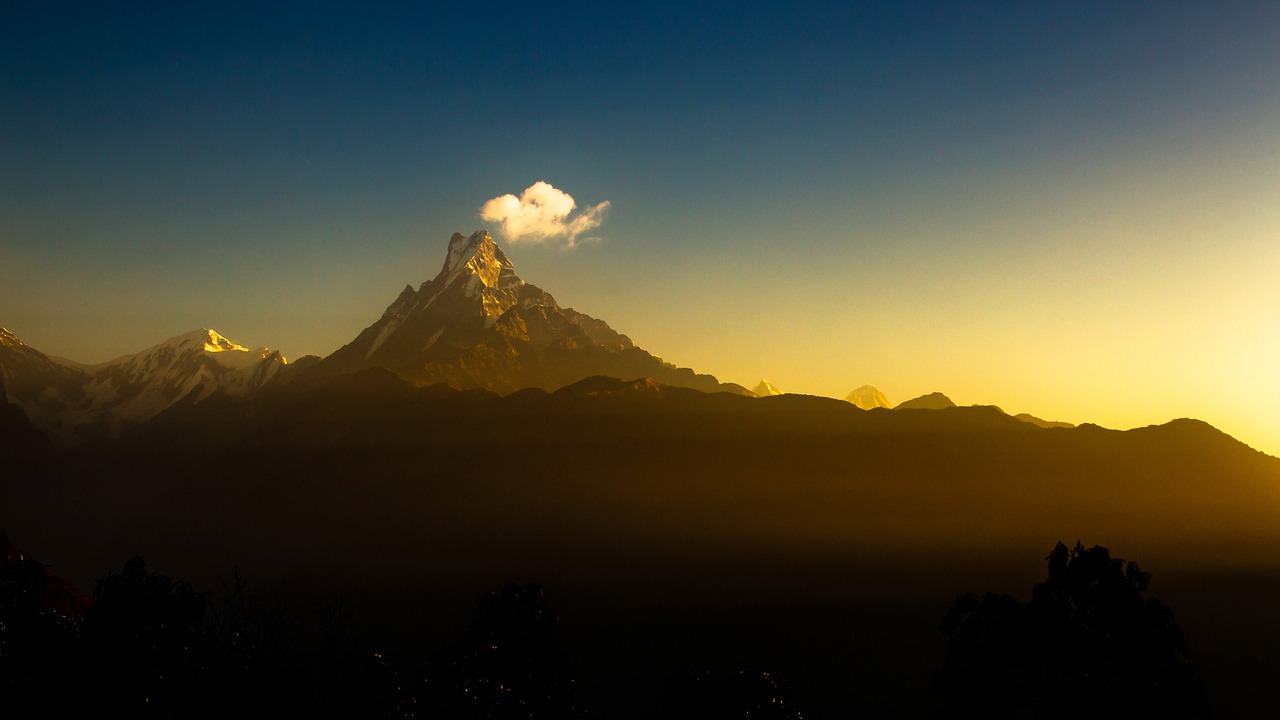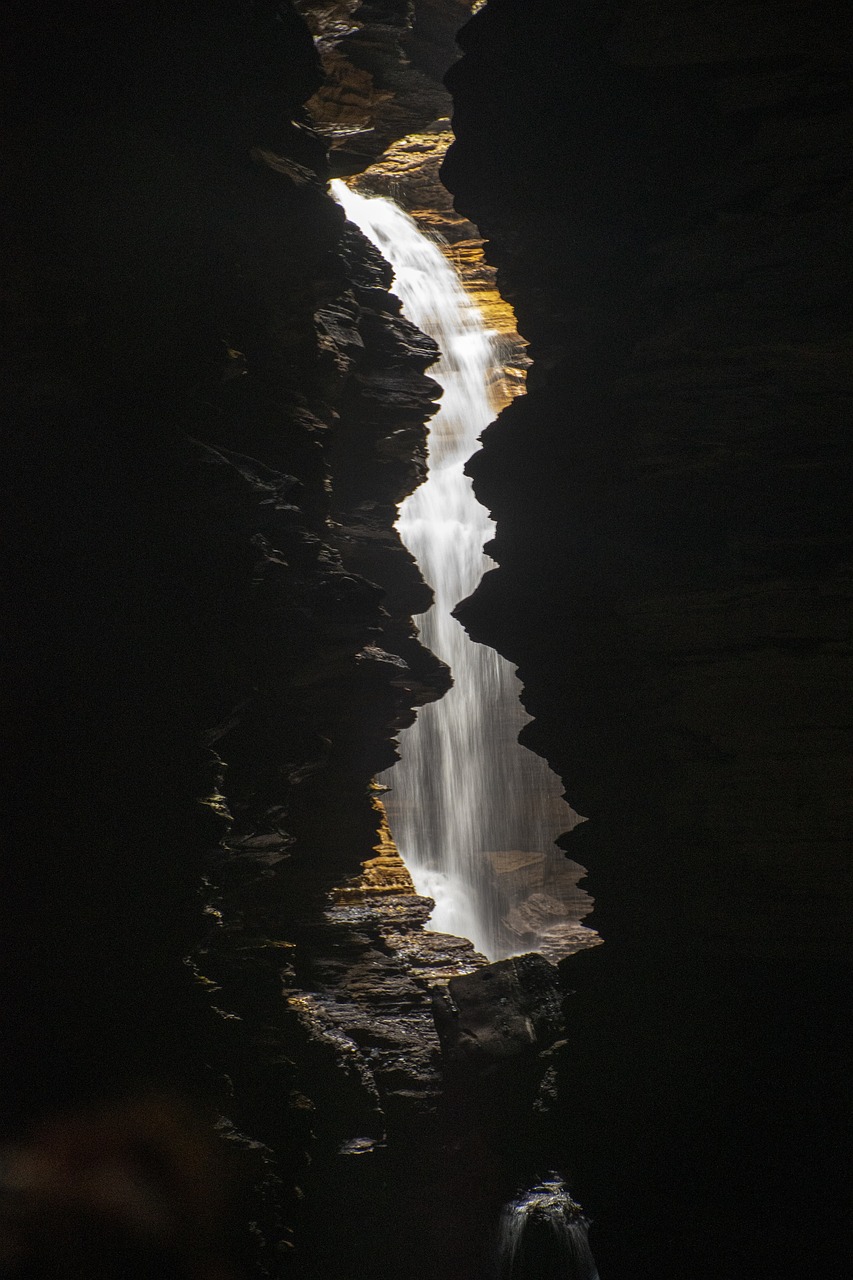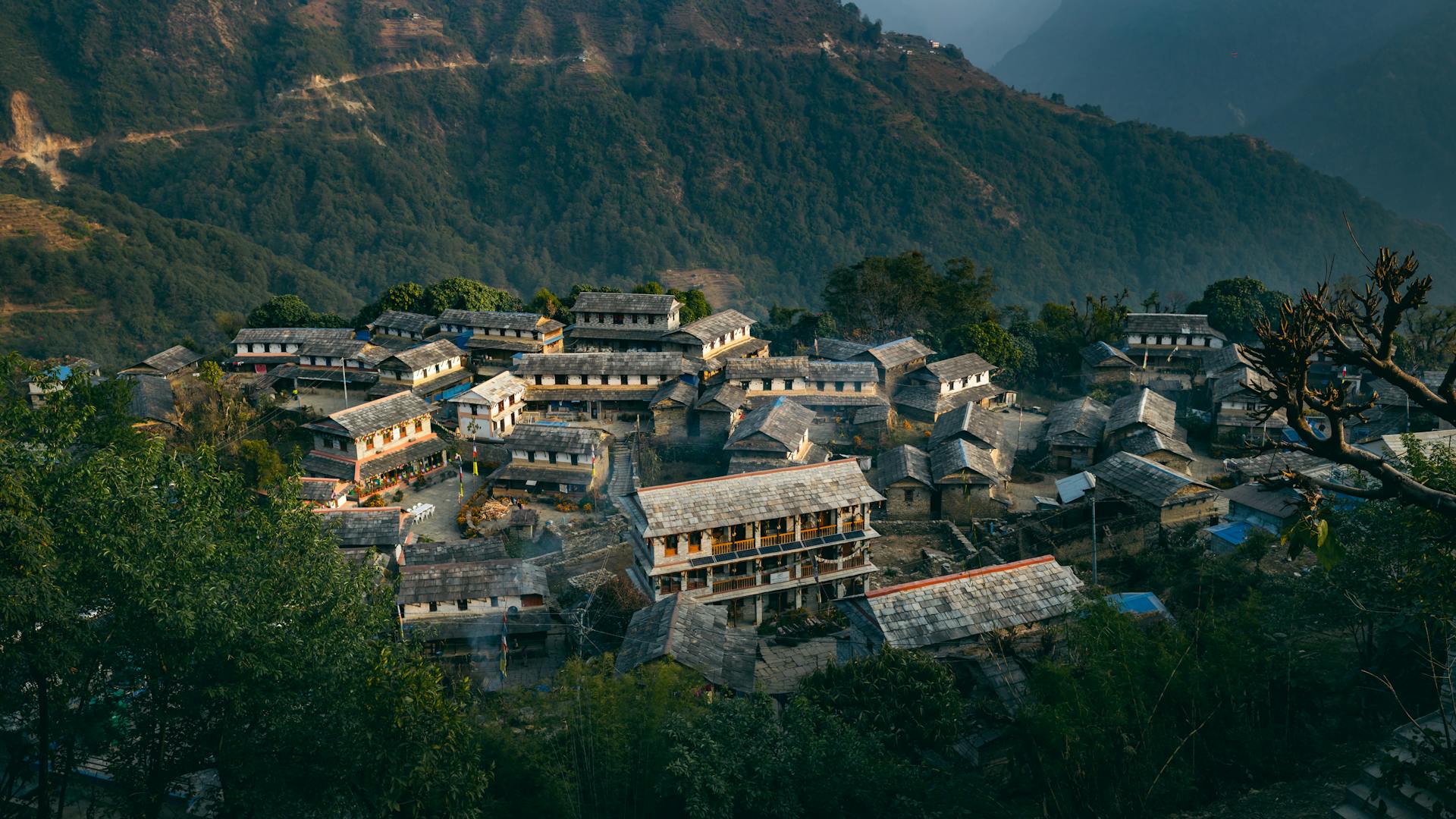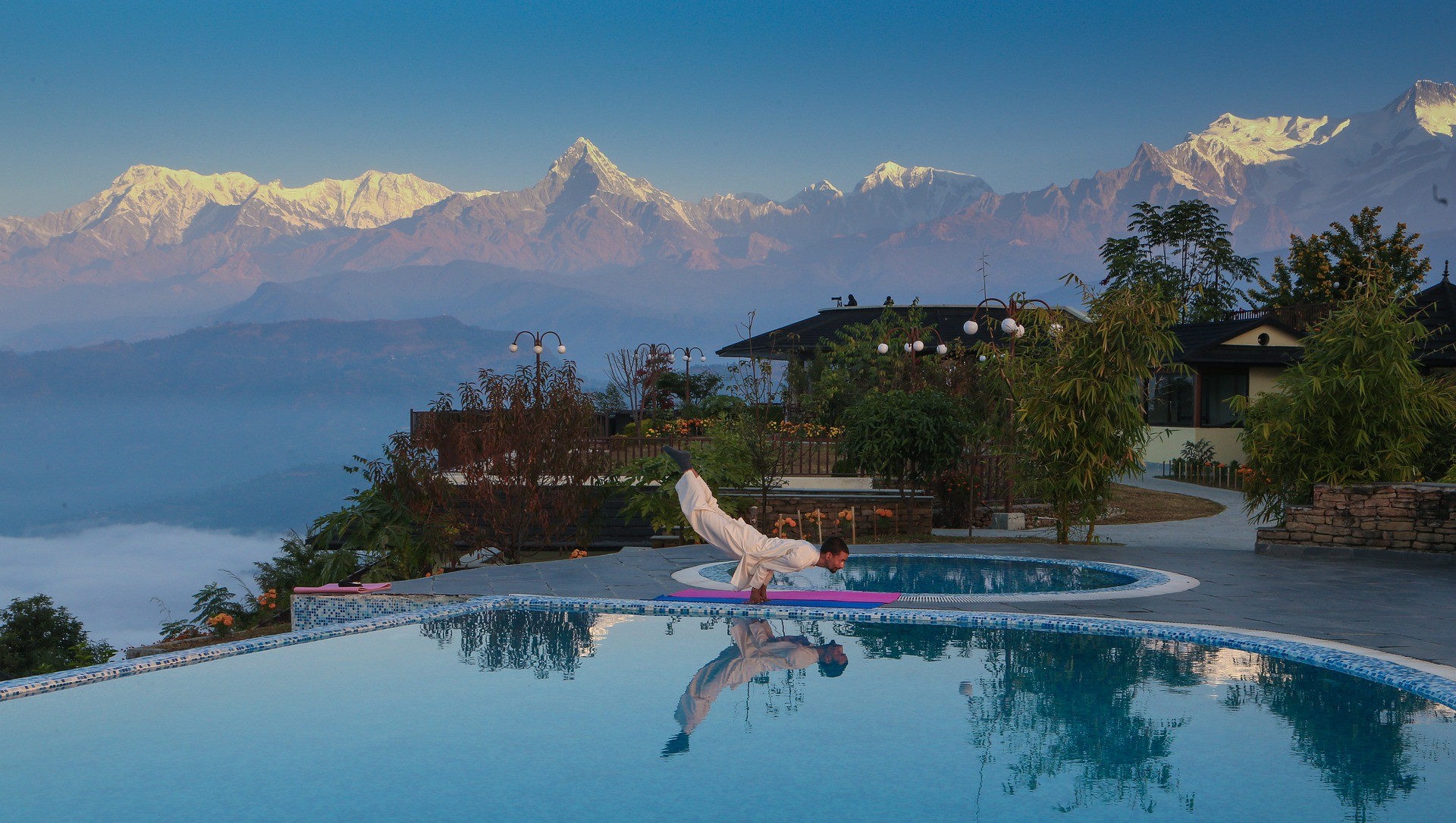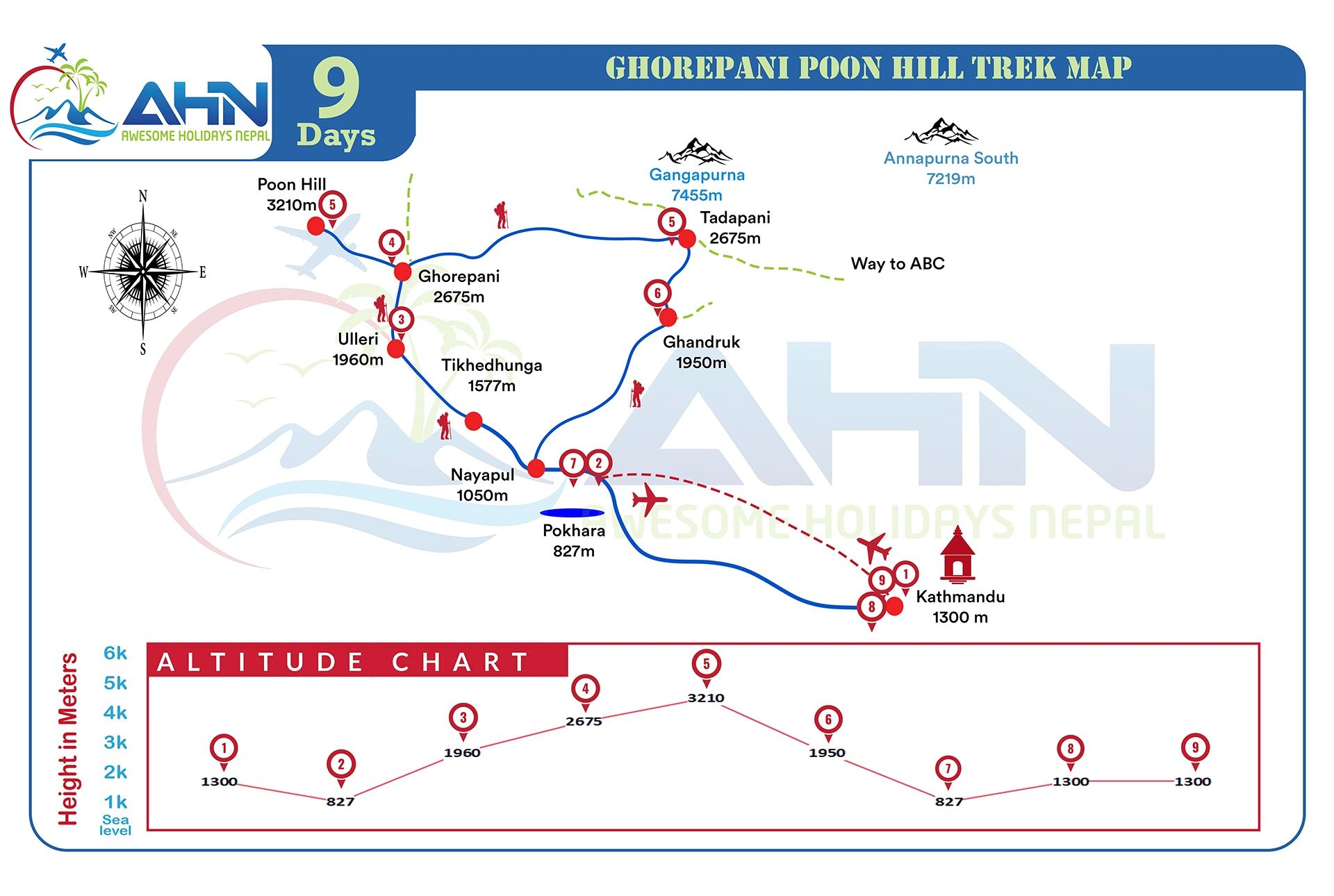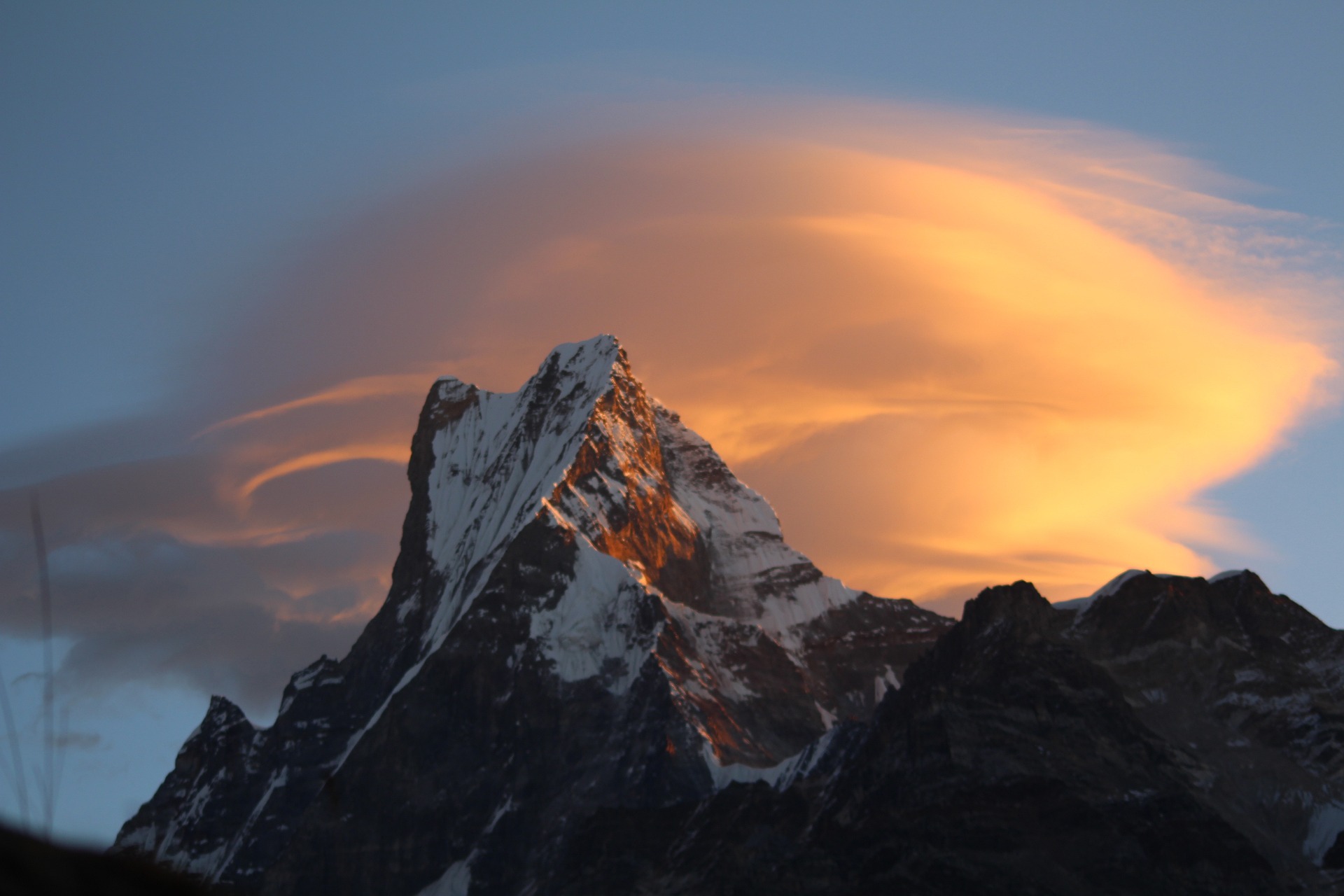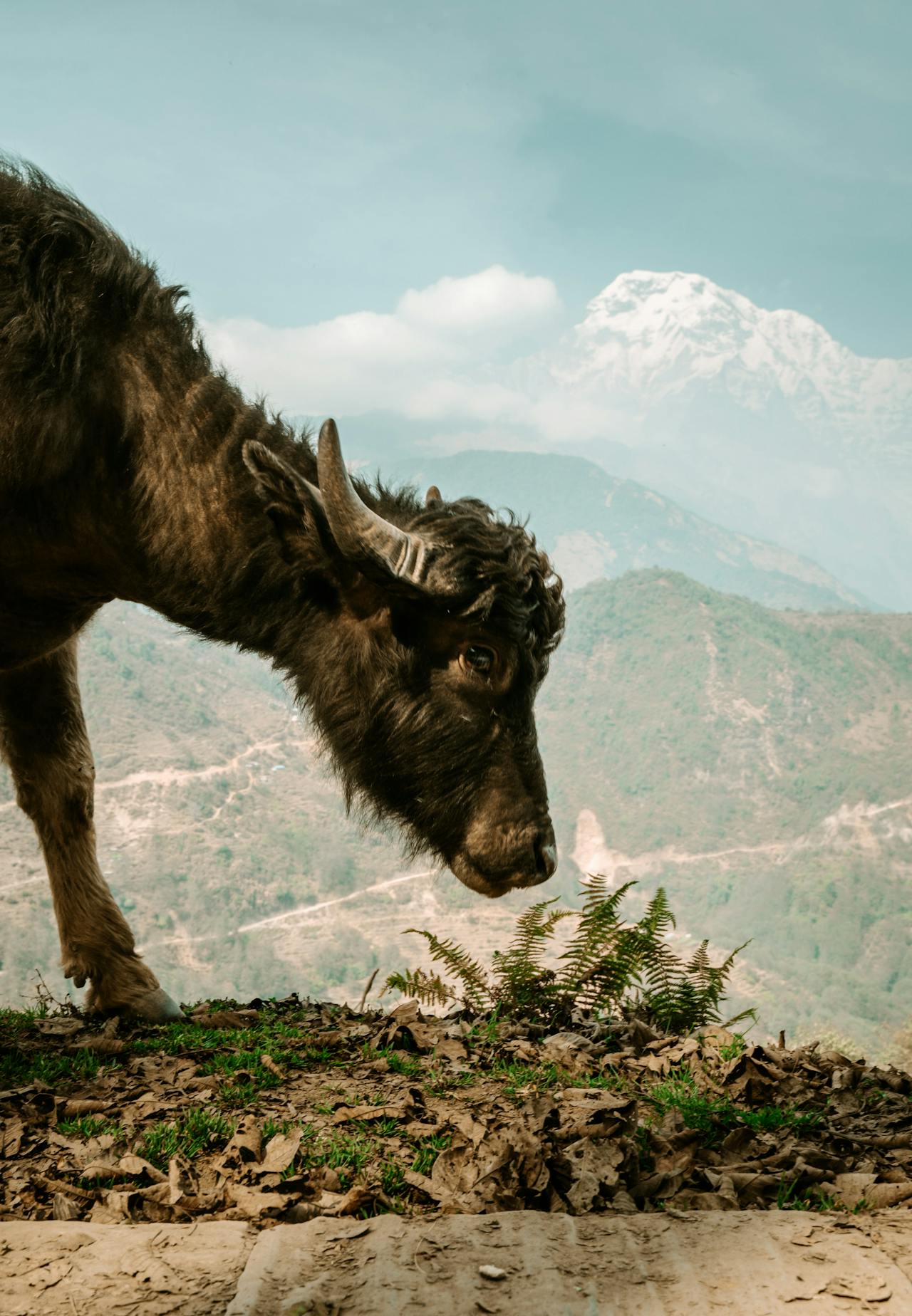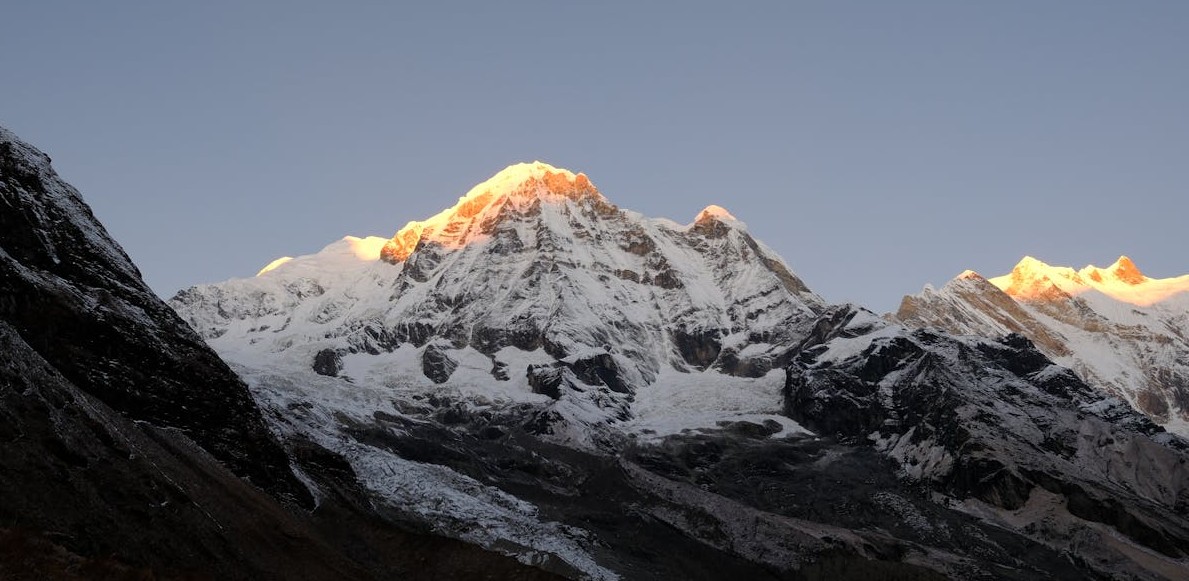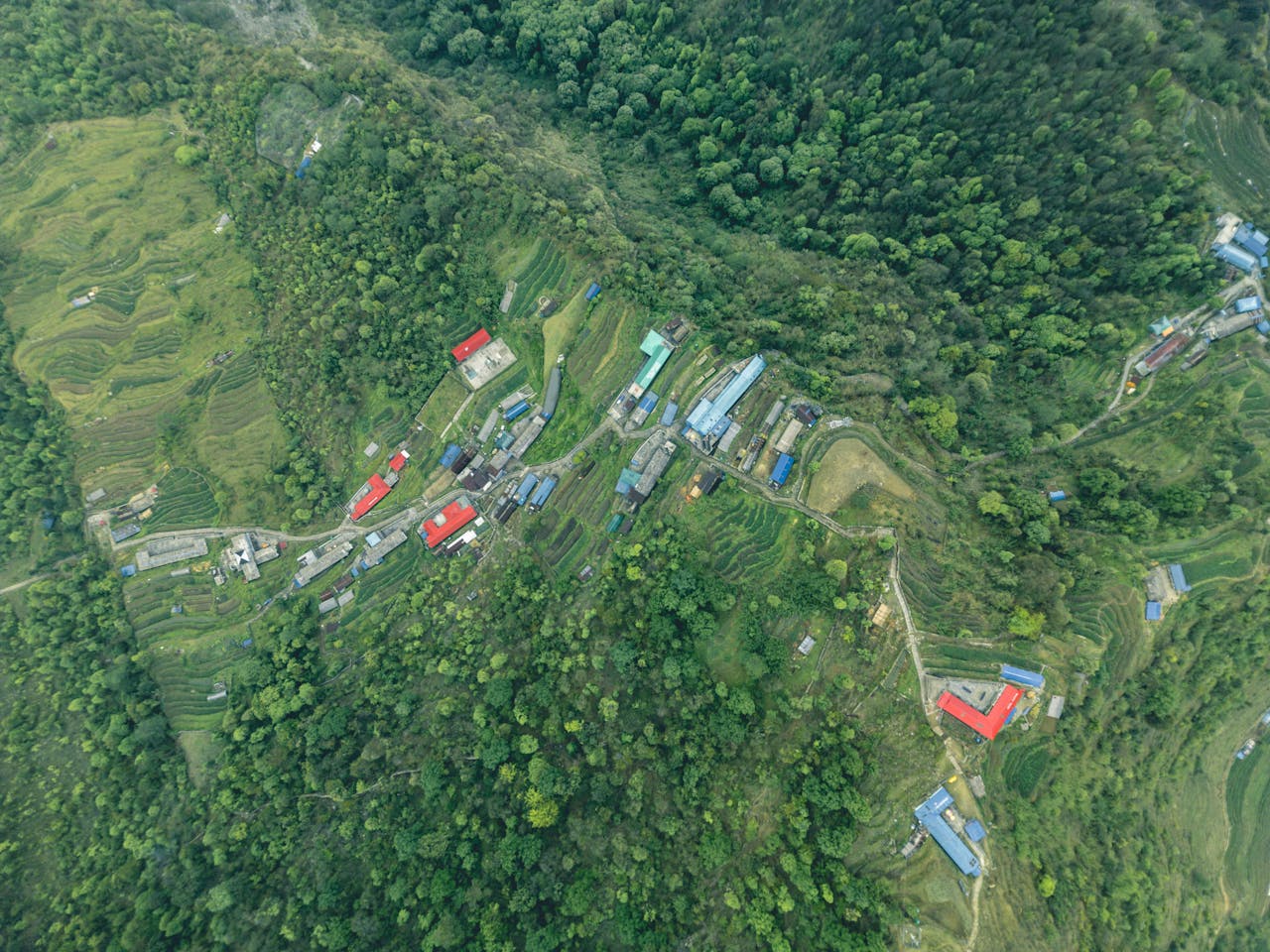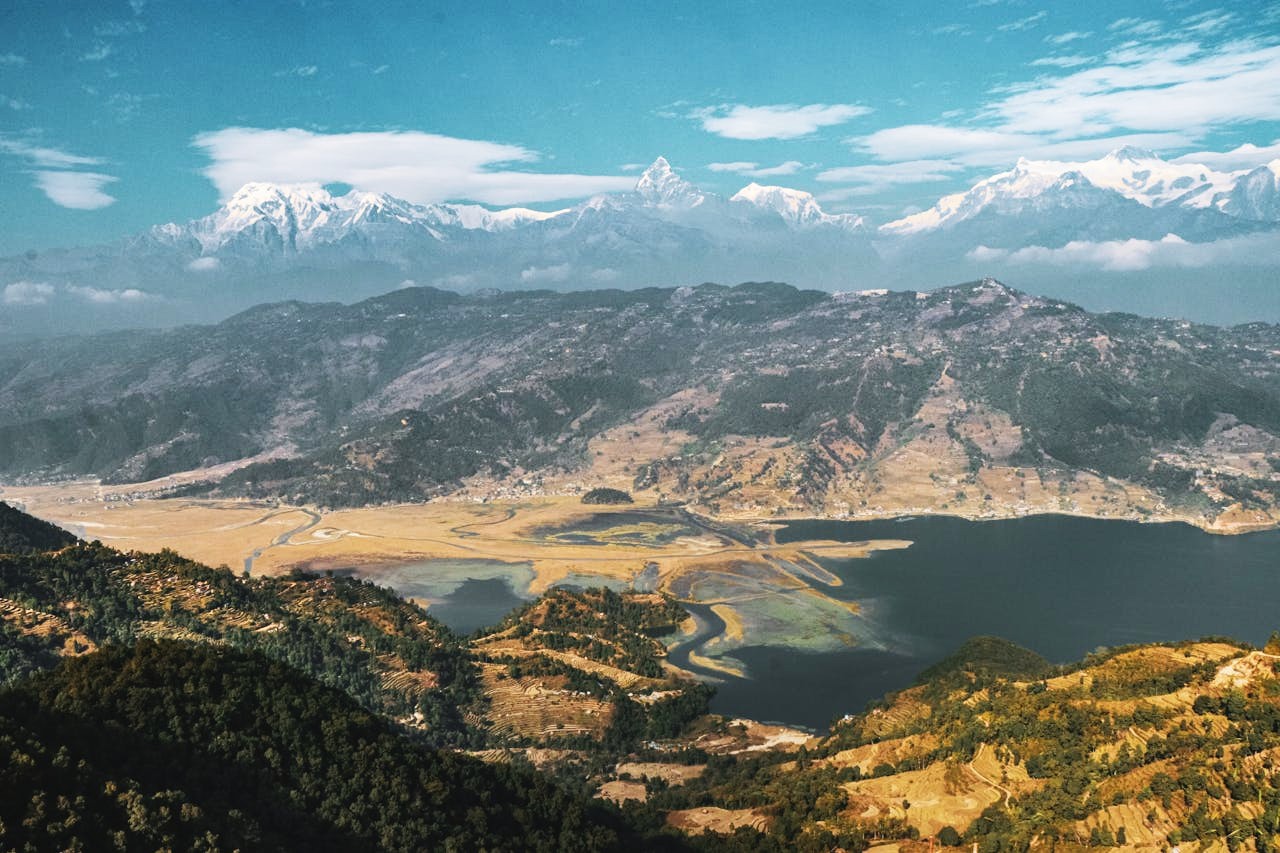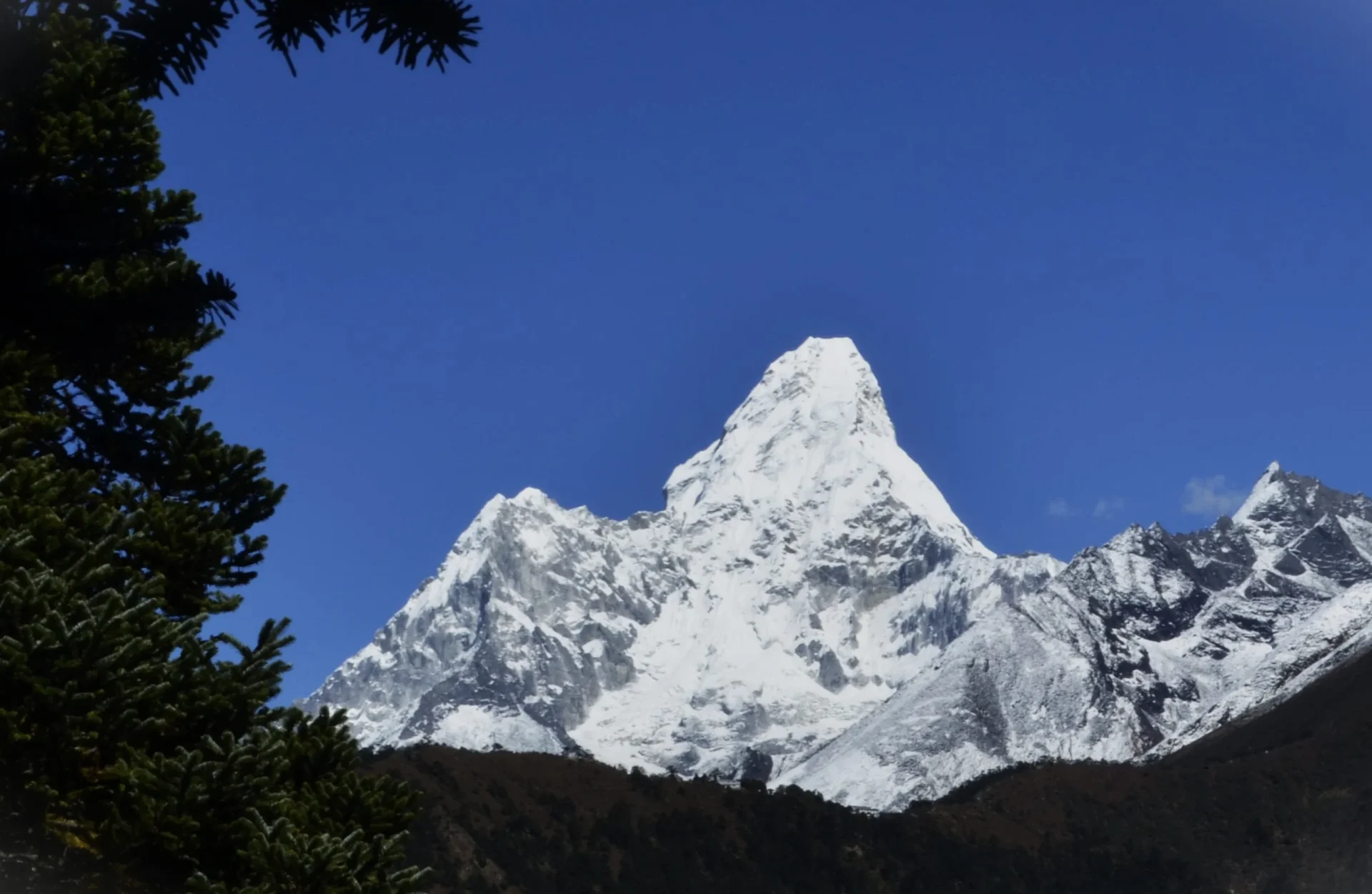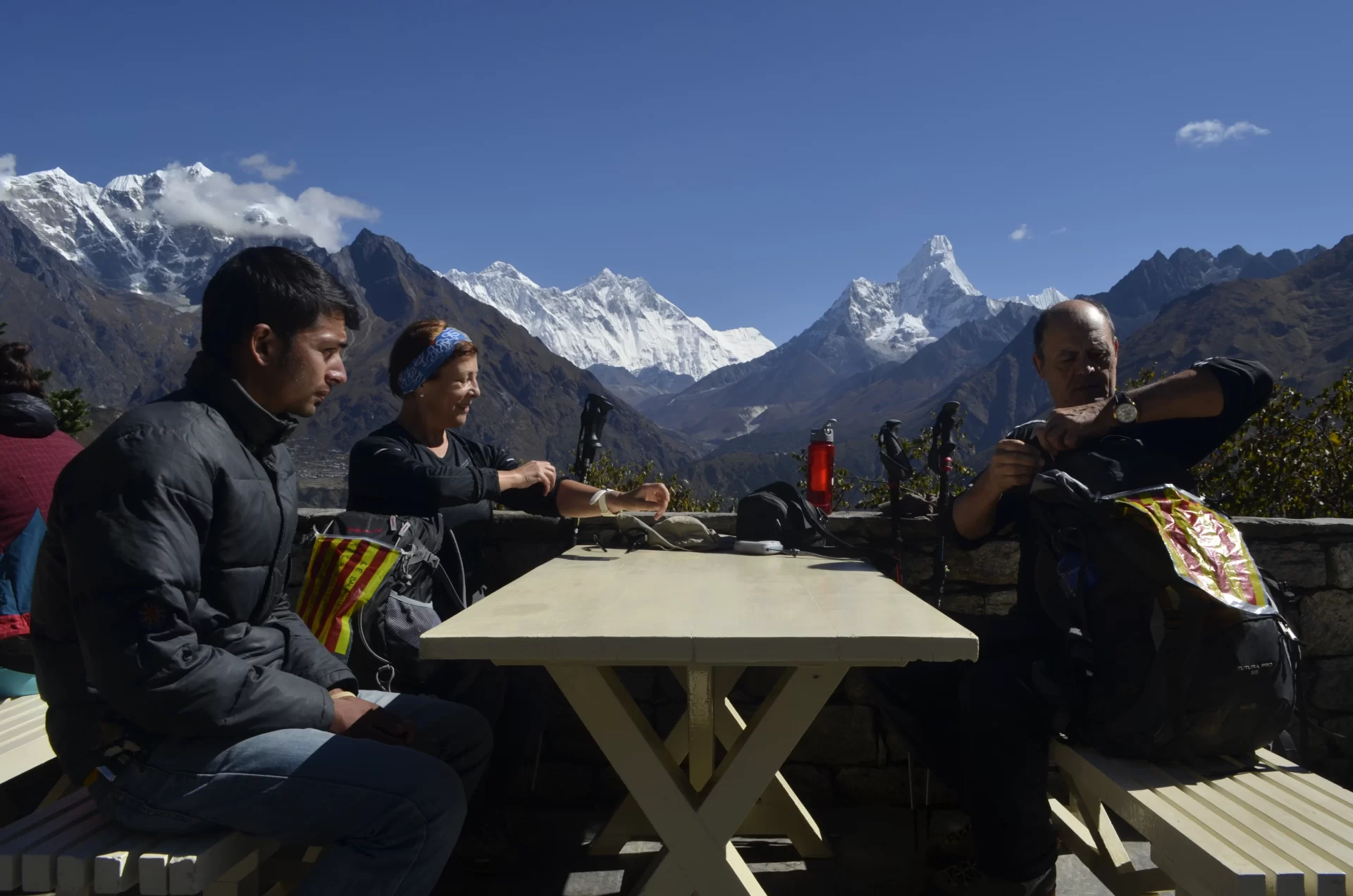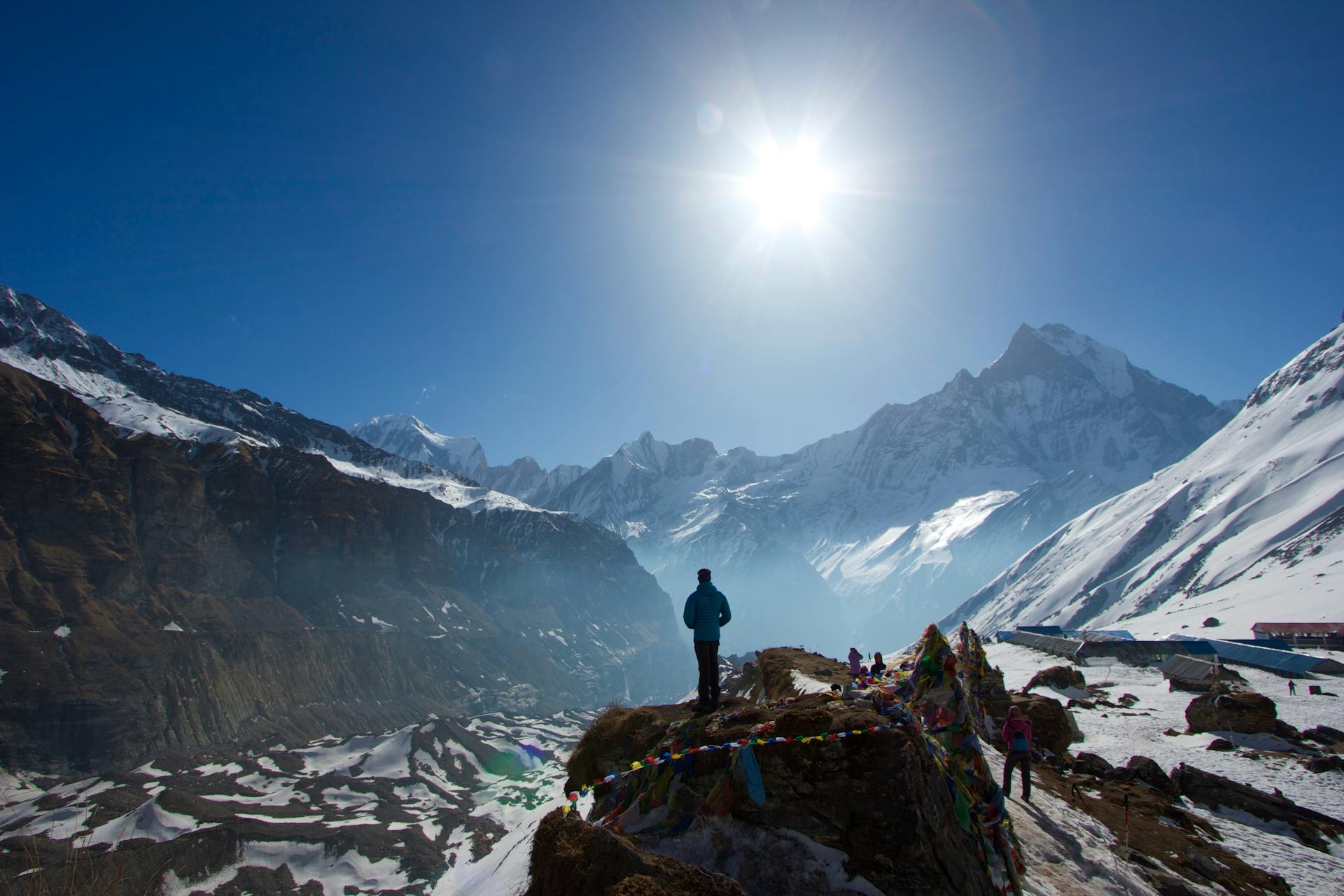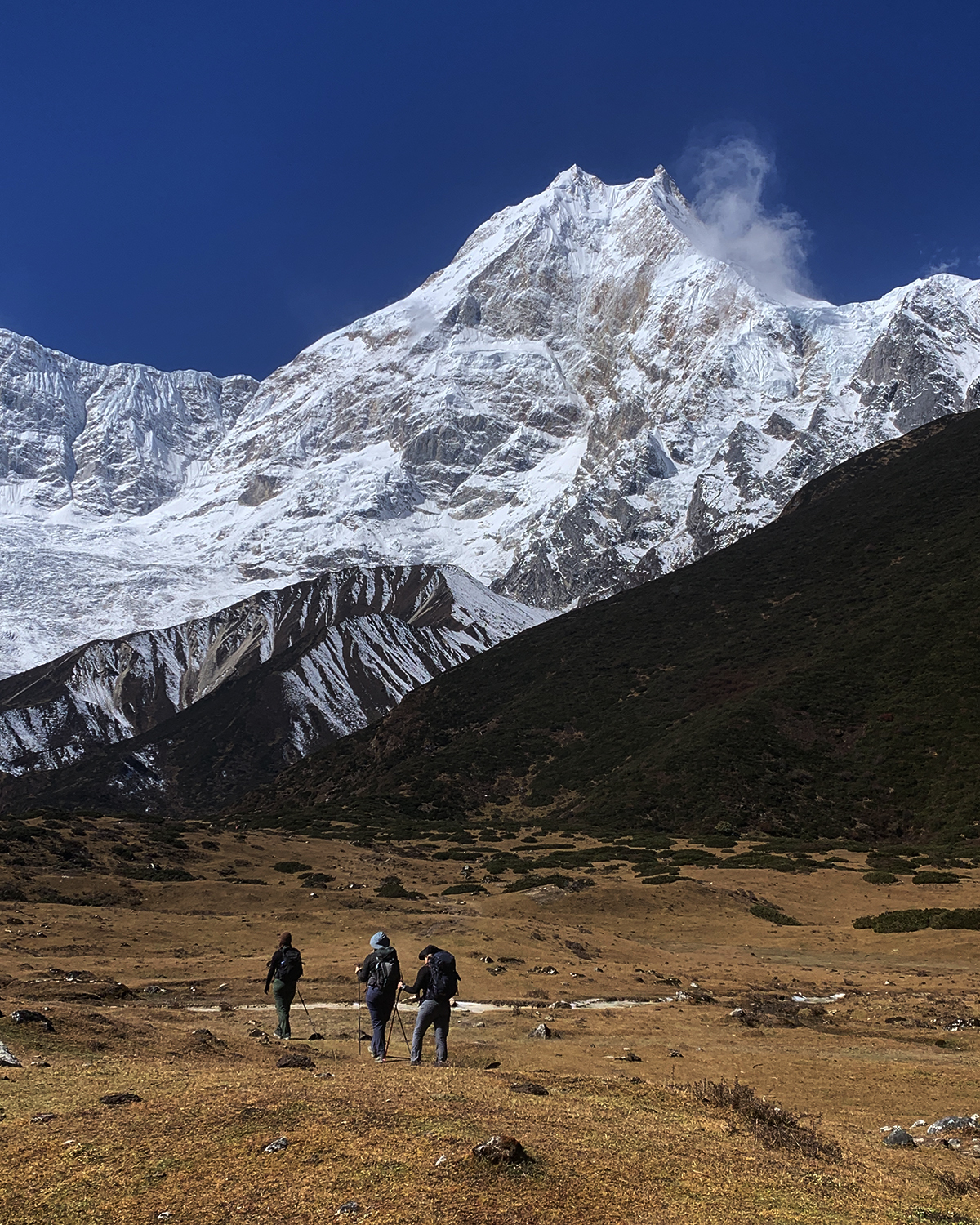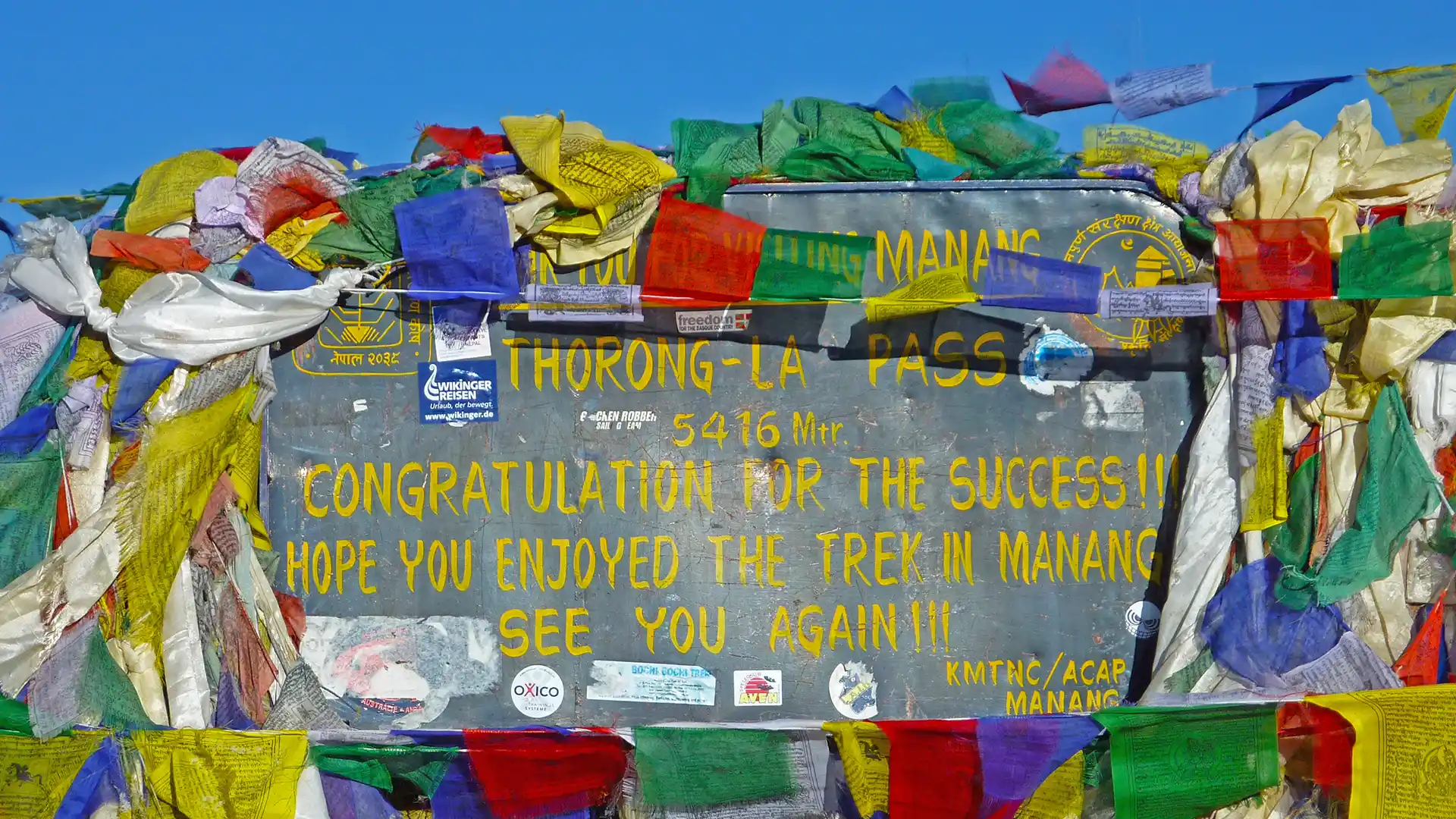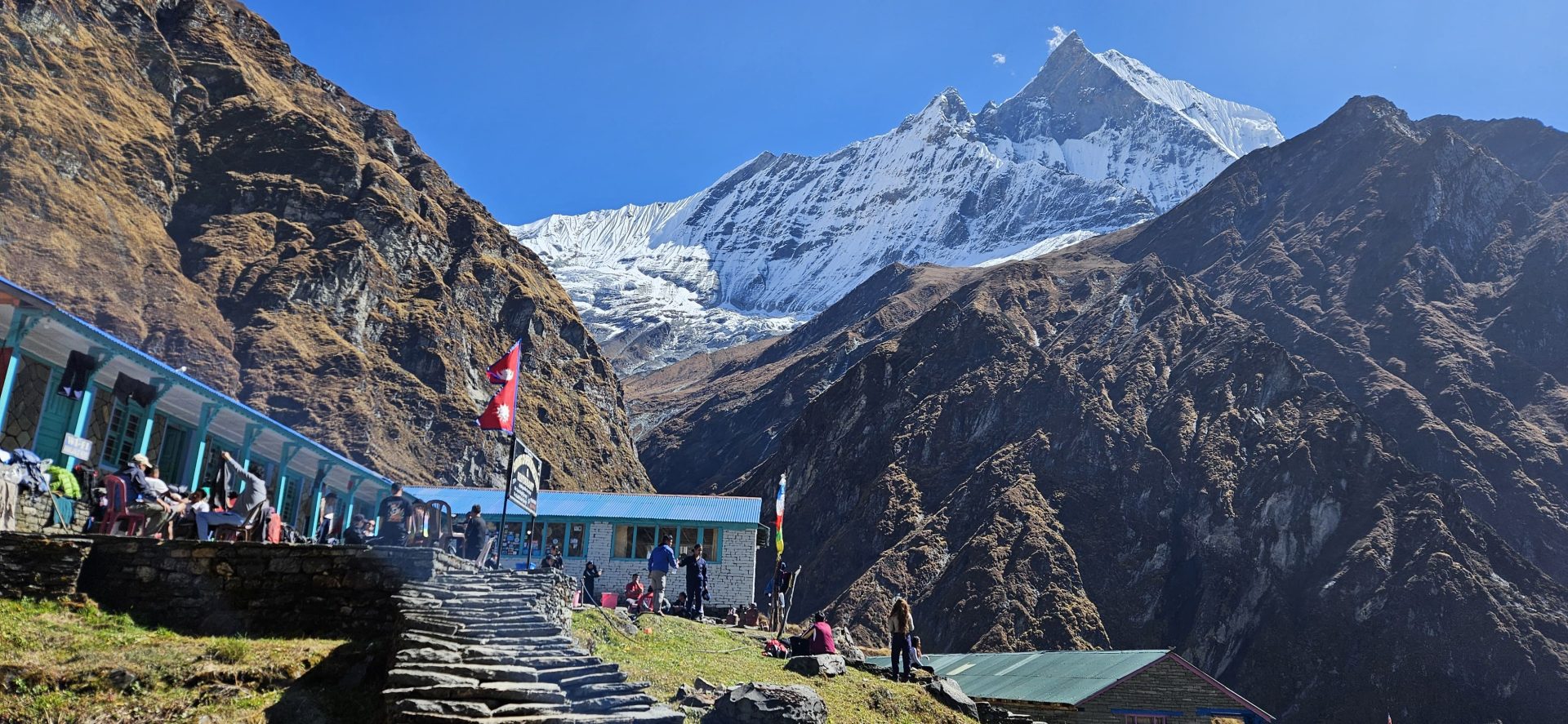The Ghorepani Poon Hill Trek is a delightful 9-day journey that offers a perfect introduction to trekking in Nepal. Starting from Kathmandu, the trek takes you through some of the most picturesque landscapes in the Annapurna region, including charming villages, lush rhododendron forests, and terraced fields.
Ghorepani Poon Hill Trek overview
The Ghorepani Poon Hill Trek is a delightful 9-day journey that offers a perfect introduction to trekking in Nepal. Starting from Kathmandu, the trek takes you through some of the most picturesque landscapes in the Annapurna region, including charming villages, lush rhododendron forests, and terraced fields. The highlight of the trek is the early morning hike to Poon Hill, where you’ll witness one of the most breathtaking sunrises in the Himalayas, with panoramic views of the Annapurna and Dhaulagiri ranges. This trek also offers a rich cultural experience, as you pass through traditional Gurung and Magar villages, where you can immerse yourself in the local way of life. The Ghorepani Poon Hill Trek is a moderate trek, making it accessible to a wide range of trekkers, and is an ideal choice for those looking to experience the natural beauty and cultural richness of Nepal in a relatively short time.
Ghorepani Poon Hill Trek Key Attractions
- Sunrise View from Poon Hill: Enjoy panoramic vistas of the Annapurna and Dhaulagiri ranges, one of the most famous viewpoints in Nepal.
- Trekking through Diverse Landscapes: The trail takes you through lush rhododendron forests, terraced fields, and scenic valleys.
- Scenic Villages: Explore traditional Gurung and Magar villages like Ghorepani, Tadapani, and Ghandruk, where you can experience the rich culture and hospitality of the local communities.
- Cultural Experience: Immerse yourself in the local traditions and customs, visiting local museums and interacting with the villagers.
- Accessible Trekking Route: With moderate difficulty and well-marked trails, this trek is suitable for a wide range of trekkers, including beginners
Ghorepani Poon Hill Trek Itinerary
Expand AllArrival in Kathmandu
As soon as you arrive at Tribhuvan International Airport in Kathmandu, you will be warmly greeted and transferred to our hotel. The excitement of being in Nepal starts to sink in as you enjoy a welcome dinner, featuring traditional Nepali cuisine. We’ll also conduct a detailed briefing about the Ghorepani Poon Hill Trek, setting the stage for an unforgettable adventure as you prepare to explore the beauty of Nepal.
Kathmandu to Pokhara
After breakfast, we embark on a scenic drive to Pokhara, a city renowned for its stunning natural beauty. Upon arrival, we have the chance to explore the serene lakeside area, with the majestic Annapurna range reflecting in Phewa Lake. This day is all about relaxation and soaking in the peaceful atmosphere of one of Nepal’s most beloved destinations.
Pokhara to Nayapul, Trek to Tikhedhunga/Ulleri
Our journey truly begins as we drive from Pokhara to Nayapul, the starting point of our trek. We set off on foot, trekking through picturesque villages, terraced fields, and lush forests, gradually ascending towards Tikhedhunga or Ulleri. The beauty of the landscape around us makes every step worthwhile, offering us a glimpse of the majestic Himalayan peaks that we’ll be getting closer to in the days ahead.
Tikhedhunga/Ulleri to Ghorepani
Today’s trek is a bit more challenging, as we make our way from Tikhedhunga/Ulleri to Ghorepani. The steep ascent, especially the section with over 3,000 stone steps, tests our stamina but rewards us with stunning views. We pass through vibrant rhododendron forests, and as we climb higher, the mountain scenery becomes more and more spectacular. By the time we reach Ghorepani, nestled in the Annapurna region, we feel a deep connection with the natural beauty around us.
Ghorepani to Tadapani (via Poon Hill)
We rise early today for a pre-dawn hike to Poon Hill, one of the most iconic viewpoints in Nepal. The experience of watching the sunrise over the Himalayas, casting golden light on peaks like Annapurna, Dhaulagiri, and Machhapuchhre, is simply magical. After taking in the breathtaking views, we return to Ghorepani for breakfast before continuing our trek to Tadapani. The trail offers beautiful scenery as we descend through forests, crossing several streams along the way.
Tadapani to Ghandruk
Today, we trek from Tadapani to Ghandruk, a picturesque village that offers a rich cultural experience. The walk is pleasant, with the majestic mountains as our constant companions. In Ghandruk, we explore traditional architecture, visit a local museum, and interact with the warm and welcoming Gurung community. This village is one of the highlights of our Nepal trip, giving us insight into the local culture and way of life.
Ghandruk to Nayapul, Drive to Pokhara
On our final day of trekking, we descend from Ghandruk to Nayapul, enjoying the beautiful landscapes and the sense of accomplishment that comes with completing our journey. From Nayapul, we drive back to Pokhara, where we can relax and celebrate our successful trek. Whether we choose to explore more of Pokhara or simply unwind by the lakeside, this day is all about enjoying the peaceful end to our adventure.
Pokhara to Kathmandu
We make our way back to Kathmandu, either by scenic drive or a short flight. Once we arrive, you will have the day to explore the rich cultural and historical sites of the city, such as Swayambhunath Stupa or the vibrant streets of Thamel. This day offers a chance to dive deeper into the cultural heart of Nepal, adding another layer of richness to your journey.
Departure from Kathmandu
Depending on your flight schedule, you may have some time for last-minute shopping or a bit more sightseeing in Kathmandu. As your Nepal adventure comes to a close, you will be transferred to the airport for departure, with memories of an unforgettable trek through one of the most beautiful regions in the world.
Ghorepani Poon Hill Trek Cost Includes
- Airport pickup and drop off (both domestic and international)
- Welcome/Farewell dinner at Kathmandu.
- Stay at teahouses/ guesthouses on the trek on a twin-sharing basis (single room available with an extra charge)
- Standard meals during the trek that includes Breakfast, Lunch, and Dinner.
- Local English-speaking guide throughout the trek.
- Porter to carry your duffel bag. 2:1 ratio of Guest to Porter.
- Kathmandu-Pokhara by luxury tourist bus
- Pokhara-Kathmandu by luxury tourist bus
- Nayapul-Pokhara-Nayapul by private vehicle
- Purifies drinking water during the trek using a water purifier or chemical purifying tablets.
- All necessary permits for the Annapurna Conservation Area Project.
- First-aid treatment in case of any emergencies.
- All administrative expenses and government taxes.
Ghorepani Poon Hill Trek Cost Excludes
- Accommodation or meals in Kathmandu except for the welcome/farewell dinner
- International flight fares and airport departure tax.
- Bottled water or any kind of beverage.
- Tourist visa for entry in Nepal.
- Travel insurance and the emergency evacuation service charges.
- Personal expenses including personal gear or equipment.
Ghorepani Poon Hill Trek date and time
Select a Departure Month
| Dates | Availability | Price |
|---|
| Dates | Availability | Price |
|---|
| Dates | Availability | Price |
|---|
| Dates | Availability | Price |
|---|
| Dates | Availability | Price |
|---|
| Dates | Availability | Price | ||
|---|---|---|---|---|
|
From: Fri, 25th Jul, 2025 To: Sat, 2nd Aug, 2025 | On Sale |
Available |
| Join now |
| Dates | Availability | Price | ||
|---|---|---|---|---|
|
From: Fri, 5th Sep, 2025 To: Sat, 13th Sep, 2025 |
Available |
US$ 670 | Join now | |
|
From: Fri, 12th Sep, 2025 To: Sat, 20th Sep, 2025 |
Available |
US$ 670 | Join now | |
|
From: Fri, 19th Sep, 2025 To: Sat, 27th Sep, 2025 |
Available |
US$ 670 | Join now | |
|
From: Fri, 26th Sep, 2025 To: Sat, 4th Oct, 2025 |
Available |
US$ 670 | Join now |
| Dates | Availability | Price | ||
|---|---|---|---|---|
|
From: Fri, 3rd Oct, 2025 To: Sat, 11th Oct, 2025 |
Available |
US$ 670 | Join now | |
|
From: Fri, 10th Oct, 2025 To: Sat, 18th Oct, 2025 |
Available |
US$ 670 | Join now | |
|
From: Fri, 17th Oct, 2025 To: Sat, 25th Oct, 2025 |
Available |
US$ 670 | Join now | |
|
From: Fri, 24th Oct, 2025 To: Sat, 1st Nov, 2025 |
Available |
US$ 670 | Join now | |
|
From: Fri, 31st Oct, 2025 To: Sat, 8th Nov, 2025 |
Available |
US$ 670 | Join now |
| Dates | Availability | Price | ||
|---|---|---|---|---|
|
From: Fri, 7th Nov, 2025 To: Sat, 15th Nov, 2025 |
Available |
US$ 670 | Join now | |
|
From: Fri, 14th Nov, 2025 To: Sat, 22nd Nov, 2025 |
Available |
US$ 670 | Join now | |
|
From: Fri, 21st Nov, 2025 To: Sat, 29th Nov, 2025 |
Available |
US$ 670 | Join now | |
|
From: Fri, 28th Nov, 2025 To: Sat, 6th Dec, 2025 |
Available |
US$ 670 | Join now |
| Dates | Availability | Price | ||
|---|---|---|---|---|
|
From: Fri, 5th Dec, 2025 To: Sat, 13th Dec, 2025 |
Available |
US$ 670 | Join now | |
|
From: Fri, 12th Dec, 2025 To: Sat, 20th Dec, 2025 |
Available |
US$ 670 | Join now | |
|
From: Fri, 19th Dec, 2025 To: Sat, 27th Dec, 2025 |
Available |
US$ 670 | Join now | |
|
From: Fri, 26th Dec, 2025 To: Sat, 3rd Jan, 2026 |
Available |
US$ 670 | Join now |
| Dates | Price | Availability |
|---|---|---|
|
Select Date:
Please select the date |
US$ 670 |
Packing List for Ghorepani Poon Hill Trek
The key is to prioritize lightweight, durable, and versatile gear. It's important to test and familiarize yourself with your equipment before embarking on a trek. If you find a particular brand that meets your criteria for quality, that's great, but always prioritize functionality and reliability.
General
- Sleeping bags (zero degrees)
- Backpack with rain cover (recommended size about 35-45 liters)
- Sleeping bag liner
- Duffel Bag (can be rented)
Basic Clothing
- Warmers and technical fabric base layer
- Comfortable pants
- Sleeping wear/night suits
- Undergarments & sports bra
Warm Clothes
- Body warmer tops and pants
- Fleece jacket/pullovers
- Warm pants
- Wool or technical fabric
- Hard-shell outer gloves
- Warm caps/Knitted hats
Feet protection
- Hiking socks
- Liner socks
- Wool or
- Casual shoes
- A pair of slippers
- Ice cleats/Microspikes (for trekking on wet surfaces, specifically from November to March)
- Gaiters (for winter treks)
Snow/Rain Protection
- Waterproof/Windproof jackets
- Waterproof/Windproof pants
- Hard-shell outer gloves
- Raincoats
Sun Protection
- Caps or Sun hat
- Sunglasses
- Shades (preferably polarized)
- Sunscreen
Trekking Gears
- Hiking poles
- Headlamps
- Technical fabric short and long sleeve shirts
- Technical fabric base layer for lower body
- Hiking pants
- Hiking shorts
Essential Medicine & First-aid
Even though your trekking guide will carry the necessary medications for altitude sickness and first aid kits to help in case of any accidents, you also need to have personal first aid kits. A personal first aid kit needs to have the following elements:
- Cough syrups
- Ointment
- Cough syrup
- Ointments
- Antiseptic creams
- Mosquito repellents
- Electrolyte
Other Necessities
- Toiletry kit
- Passport
- Extra copies of passport-sized photos (required for permits and other docs)
- Reusable water bottle
- UV water purifier or Water purification tables
- Hydration bladder
- Towel
- Pillowcases
- Waterproof bags (for carrying money and necessary documents)
Optional Equipment
- Cameras and mobile phones
- Power banks (preferably solar-charged)
- Binoculars
- Pee funnel and pee bottle
- Whistle
- Thermos bottle for hot drinks and water
- Binoculars
- Cards/books/diaries
Ghorepani Poon Hill Trek FAQs
Expand AllWhen is the best time to trek to Ghorepani Poon Hill?
The best time to trek Ghorepani Poon Hill is during the Autumn and Spring seasons, as the climate is favorable and the trekking route is rich in luscious greens. For a safe, memorable, and awesome experience, plan a trek between mid-September and November or March and June. However, the trek is possible all around the year. As long as you can avoid rainstorms and sustain extreme temperatures, you can ascend during colder months to avoid the crowd.
How long does the trek take?
A short trek to Ghorepani Poon Hill usually takes 4 days to complete. However, the trek duration might vary depending on your chosen route and starting point. If you plan to explore more of the Annapurna region, you will need a few more days.
Do I need to book in advance?
Though it might not be mandatory, booking your base camp trek in advance is better to ease the process, specifically if you plan for trekking seasons, as mentioned above. Booking in advance secures your spot and ensures you and your trekking company are well-prepared for the trek. However, getting the trekking permits, booking accommodation and transport, and getting your visas might take time.
What kind of fitness level is required?
To trek to Ghorepani Poon Hill, you will require a basic level of fitness since you will walk at least 6-7 hours a day. You will also require good cardiovascular endurance and muscular strength to ascend quickly through rough terrain. If you aren’t somebody who doesn’t perform physical training regularly, it is better to start training at least ¾ months in advance. Ensure you include cardio, flexibility exercises, and strength training in your workout to prepare your body for the trek.
What permits are required?
To trek through Ghorepani Poon Hill, you will require two passes: the Annapurna Conservation Area Permit and the TIMS card. These passes can be obtained easily from the Tourism Board of Nepal.
How much does the trek cost?
A short Ghorepani Poon Hill trek costs $550 per person. However, the cost may vary depending on the customization of food and accommodation, the variation of the trekking package, and the routes that you choose. The trekking cost doesn’t include any personal expense or charge for the services made upon request. Please check the packages for the price and find the amenities/services offered.
Do I need travel insurance?
It isn’t mandatory to take travel insurance for shorter treks to the Annapurna region, such as Ghorepani Poon Hill. But it is advisable to take one to prepare in advance for possible catastrophic situations on the trek.
Can I customize my itinerary?
Yes, you can customize your itinerary according to your needs. We can add or minimize the acclimatization days, optimize the trekking route, and shorten or elongate the trek as you prefer. However, if you have booked for our regular trekking package that moves as a group, customizing the itinerary just for an individual isn’t possible.
What is the best way to train for the trek?
Some of the best ways to train for the trek are through regular cardio, focusing on breathing exercises, strength training, lifting weights, hamstring sketching exercises, and so on. You can also switch to climbing stairs instead of lifts, walking, or jogging instead of driving to smaller distances to prepare your body. Additionally, going on regular hikes or climbing up the hills can be the best way to train for the trek.
What kind of gear do I need?
To trek to Ghorepani Poon Hill, you will need lightweight and warmer clothing, trekking poles, hiking boots, headlamps, sleeping bags, sunglasses, toiletries, and solar batteries.
Do I need vaccinations?
It isn’t mandatory to get any vaccinations to trek to Ghorepani Poon Hill. However, you can check your country’s travel regulations and vaccinate yourself before visiting Nepal. Typically, routine vaccines are available, including those against Malaria, Japanese Encephalitis, Hepatitis A, Hepatitis B, Typhoid, Rabies, and Cholera.
What currency should I carry?
For any personal expenses other than those offered by the trekking company, you will need Nepalese rupees for your trek. However, it is better to have some USD or your home currency as a backup for emergencies or returns. Make sure to exchange your currencies for Nepali rupees in Kathmandu to find the best rates.
Do I need a visa for Nepal?
To travel to Nepal, you will need a “Tourist Visa.” This visa is available on arrival for most foreign visitors except for visitors from African countries, Afghanistan, and refugees with travel documents. Check the official website of the Department of Immigration for information regarding On Arrival and other tourist visas in Nepal.
Is it possible to trek solo?
It is possible to trek solo to Ghorepani Poon Hill. However, you must be prepared to adapt to the exciting yet exhilarating trek. You will need that additional physical and mental strength to trek solo to this region. A solo traveler must obtain the required documents to obtain the permit. Keep in mind that many protected areas require at least a team of two people to obtain the trek permit.
What is the trek route like?
The trekking route to the Ghorepani Poon Hill consists of rough rocky terrain, steep hills, stairs, and narrow trails. You will encounter suspension bridges, a biodiversity conservation area, luscious green forests, and locally inhabited villagers along your path.
What kind of accommodation is available?
While standard, three-star, and five-star accommodations are available in Kathmandu and Pokhara, the options might be restricted on the trekking route. You will most likely find tea houses with clean rooms along the route. And yes, it is possible to get private rooms or rooms with attached bathrooms, but you will have to pay an extra charge.
How do I get to the starting point?
You can reach Ulleri, the starting point of the Ghorepani Poon Hill trek, with a drive from Pokhara. However, if you are traveling from Kathmandu, you can reach Pokhara on a scenic drive or via flight.
Is there electricity and Wi-Fi available?
Yes, electricity and Wi-Fi are available in most teahouses en route to the Ghorepani Poon Hill trek. However, it might be costly to access internet services and charge your devices at these stops, and the reliability of the connection is questionable, too. You can carry rechargeable solar batteries for electricity.
What is the food like on the trek?
The guesthouses and teahouses primarily serve Nepali, Tibetan, Thakali, and other ethnic cuisine, which primarily includes Rice, Pulses, Bread, Noodles, Soup, Pasta, and Pastries. You will also have the option of drinks and continental cuisine.
Are there showers available?
Yes, showers are available on the Ghorepani Poon Hill trek for an extra $2-$5 charge. Even the remote villages offer you a pail of hot water to shower for a few dollars, but it’s recommended that you avoid showering at higher elevations.
Can I charge my electronics?
There are provisions for charging your electronics in rest houses, teahouses, or local stays. But remember to carry the required adapters (C type and D type) to fit your chargers.
What kind of toilets are available?
The teahouses have clean but fundamental squat toilets en route to Ghorepani Poon Hill. In emergencies, private areas along the trail can also be found to relieve the pressure.
Is it possible to do laundry on the trek?
Yes, doing laundry on the trek to Ghorepani Poon Hill is possible. However, the water is cold, so we suggest you do not do it unless necessary. Packing enough clothes is better than looking for laundry in elevations with cold water.
Can I buy snacks and drinks on the trek?
You are less likely to find a store to buy snacks and drinks on the trek as it is a remote area inhabited by fewer people. However, the tea houses along the trail do sell biscuits, candies, and other snacks. We advise you to carry protein bars, dried nuts, and fruits to snack when you want. You can bring a refillable bottle with a filter to drink water from sprouts or springs along the way.
Are there ATMs along the trail?
You can find ATMs only in Pokhara. Other than that, there are no ATMs along the Ghorepani Poon Hill trail.
How do I deal with altitude sickness?
If you get altitude sickness on your way to the Ghorepani Poon Hill, let your trekking guide know about the situation. The guides are prepared with first aid required for such a situation. Rest at the same spot and take anti-sickness medications. After you feel a little better, descend to a lower altitude. In case the situation worsens, ask the guide to contact the head office in Kathmandu for a helicopter rescue.
What should I pack for the trek?
You should pack warmer clothes, trekking gear, all your necessary medications, and your travel documents for the trek. Additionally, you should pack protein bars, dry nuts, and fruits for snacking on the trek, along with a refillable water bottle. Even though the company will provide you with packaged water bottles along the journey, it is convenient to carry your own.
Are there medical facilities along the way?
Medical facilities are very limited en route to the Ghorepani Poon Hill. You can find limited medical services in major stops such as Pokhara. We suggest you carry all necessary medications in your backpack before you board the flight or drive to Pokhara.
Is it safe to drink the water?
Water from natural sources looks clean in Ghorepani Poon Hill, but drinking it might not be safe. You can purify the water using bottle filters, chlorinate it, or boil it to make it potable.
What should I do in case of an emergency?
In case of emergency, the first thing you can do is contact our trekking guide. Our trekking guides are equipped with oximeters and necessary first-aid kits and trained to handle emergencies. Besides, the guides will have all the necessary contacts to contact emergency rescue services such as helicopter rescue, air ambulance, or land rescue.
How can I prevent altitude sickness?
The best way to prevent altitude sickness is to rest properly after your trek, acclimate to the altitude, stay hydrated, and avoid alcohol while on the trek.
What should I do if I experience altitude sickness?
Stop immediately when you feel sick due to altitude and rest for a while. Hydrate yourself and take medications to ease the pain. You should never try to ascend or descend right away whenever you are experiencing altitude sickness. Let your trekking guide know about your situation and request an emergency rescue if the condition worsens.
What medications can help with altitude sickness?
Acetazolamide (usually sold under the name Diamox) can help you with altitude sickness. As it reduces the severity of any observed symptoms as well as helps you adjust to high altitude quicker, Diamox is often suggested to treat acute altitude sickness. Some other medications that can also help are Dexamethasone, Nifedipine, and Ibuprofen. It is safe to consult your physician and take the medications in advance to prevent allergies or any undesired reaction against the drugs.
What other health concerns should I be aware of?
You should be aware of any medical conditions that you might have before planning the trek. If you have pulmonary diseases, asthma, or any other breathing-related illness, it’s better to get it checked and prepared in advance with medication and stimulatory exercises. Additionally, you should be aware of any allergies you might have before you trek. To prevent illness on the route, it is always best to avoid food, drinks, or agents that can instigate a hypersensitive reaction in your body.
Is it safe to trek alone?
It isn’t too safe to trek alone in the wilderness. If you are planning to trek to high-altitude mountains like the Annapurna Base Camp, which can often have unpredictable weather, is prone to natural calamities, and involves risky and rough terrains, it isn’t safe to travel solo. If you know the route very well and are mentally and physically prepared to trek alone, go for it. Otherwise, it is recommended to take along a travel guide who knows the route well to have a smooth trekking experience.
What should I do if I get injured?
If you get injured during the trek, stop for a break and take the necessary first aid. If you have a serious injury that needs immediate attention, call for emergency rescue with the help of your trekking guide.
Are there any dangerous animals on the trek?
Since the trekking route takes you through conservation areas, it is obvious to see animals on the route. Although it is less likely to find a dangerous animal on the trail, it isn’t impossible. Leopards, cheetahs, musk deer, etc, can often inhabit mountainous regions. Traveling in groups in such forest areas is better than encountering one. But if you do, don’t just run or instigate the animal; let it pass before you move.
What is the weather like on the trek?
The weather can be pretty unpredictable if you are trekking to a mountainous region with a higher elevation, such as the Ghorepani Poon Hill. Usually, the temperature is lower and can drop to freezing at night. Besides, the higher elevation areas often have snow storms, soft rains, and chilled breezes.
Is the trek physically demanding?
Yes, indeed! The trek to Annapurna Base Camp takes you to higher elevations, where the temperature is low, oxygen is scarce, and the terrain is rough and risky. You must be physically fit and mentally composed to complete the trek successfully.
Ghorepani Poon Hill Trek Reviews
Login to ReviewWhat makes this trip different ?
 Environment-Friendly Initiative
Environment-Friendly Initiative
- Awesome Holidays Nepal believes in contributing to the wellness of the environment while promoting adventure and tourist destinations in Nepal.
- For every visitor who books a trip or trek with us, we plant a fruit tree in barren lands in collaboration with community forests.
 Giving Back to the Community
Giving Back to the Community
- Awesome Holidays believes that the native residents know any destination better than an outsider. Thus, the guides, porters, and travel companions who will serve you through the trek or tours are local residents of that particular region.
- As a part of our communal service, Awesome Holidays is also contributing to the welfare of street dogs by feeding them every week.
Similar trips
Experience the difference with our trek experts guiding you through the most challenging trekking routes of Nepal's most famous mountain base camps. We believe in making every journey awesome for you!

